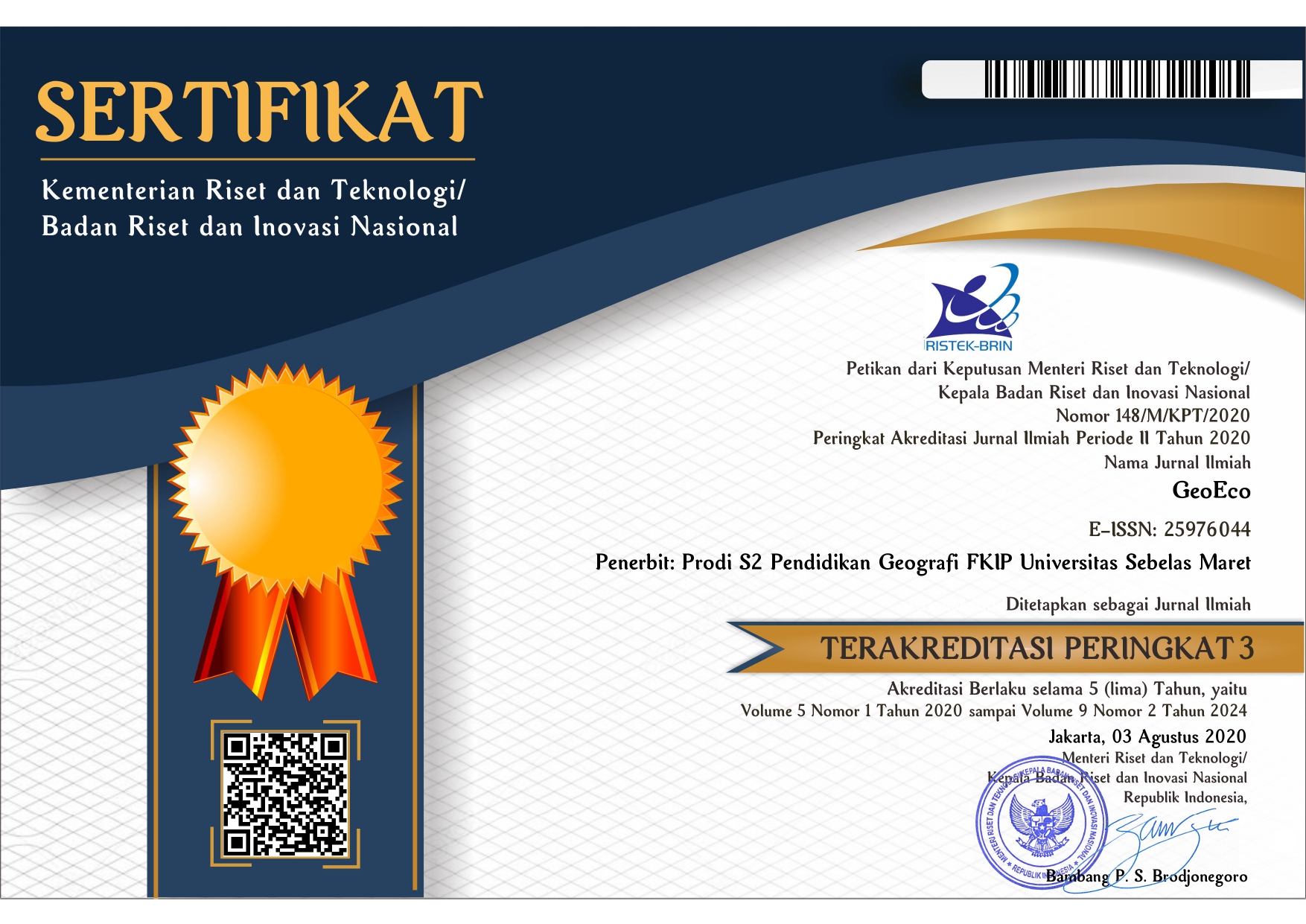THE STUDY OF KARST DESERTIFICATION MAROS PANGKEP BASED ON LANDSAT 8 OLI IMAGERY
Abstract
Keywords
Full Text:
PDFReferences
Borengasser, M., Hungate, W.S., Watkins, R. (2008). Hyperspectral remote sensing. Principles and Applications. CRC Press.
Brinkmann, R., & Garren, S. J. (2011). Karst and Sustainability. In Karst Management (pp. 361–378). Springer Netherlands. https://doi.org/10.1007/978-94-007-1207-2_16
Calò, F., & Parise, M. (2006). Evaluating the Human Disturbance to Karst Environments in Southern Italy. Acta Carsologica, 35(2–3). https://doi.org/10.3986/ac.v35i2-3.227
De Waele, J. (2009). Evaluating disturbance on mediterranean karst areas: the example of Sardinia (Italy). Environmental Geology, 58(2), 239. https://doi.org/10.1007/s00254-008-1600-x
Ford, Derek; Williams, P. (2007). Karst Hydrogeology and Geomorphology. John Wiley & Sons Ltd,.
Huang, Q; Cai, Y. (2008). Mapping Karst Rock in Southwest China. Mountain Research and Development, 29(1), 14–20. https://doi.org/10.1659/mrd.857
Parise, M., Qiriazi, P., & Sala, S. (2008). Evaporite karst of Albania: main features and cases of environmental degradation. Environmental Geology, 53(5), 967–974. https://doi.org/10.1007/s00254-007-0722-x
Van Beynen, P., & Townsend, K. (2005). A Disturbance Index for Karst Environments. Environmental Management, 36(1), 101–116. https://doi.org/10.1007/s00267-004-0265-9
Werz, H., Hotzl, H. (2007). Groundwater risk intensity mapping in semi-arid regions using optical remote sensing data as an additional tool. Hydrogeology Journal, 15, 1031–1049. https://doi.org/10.1007/s10040-007-0202-0
Wulandari. (2016). Maros Dalam Angka. Badan Pusat Statistik.
Xiong, Y. J., Qiu, G. Y., Mo, D. K., Lin, H., Sun, H., Wang, Q. X., Zhao, S. H., & Yin, J. (2009). Rocky desertification and its causes in karst areas: a case study in Yongshun County, Hunan Province, China. Environmental Geology, 57(7), 1481–1488. https://doi.org/10.1007/s00254-008-1425-7
Yang, P., Tang, Y.-Q., Zhou, N.-Q., Wang, J.-X., She, T.-Y., & Zhang, X.-H. (2011). Characteristics of red clay creep in karst caves and loss leakage of soil in the karst rocky desertification area of Puding County, Guizhou, China. Environmental Earth Sciences, 63(3), 543–549. https://doi.org/10.1007/s12665-010-0721-1
Refbacks
- There are currently no refbacks.












.png)

